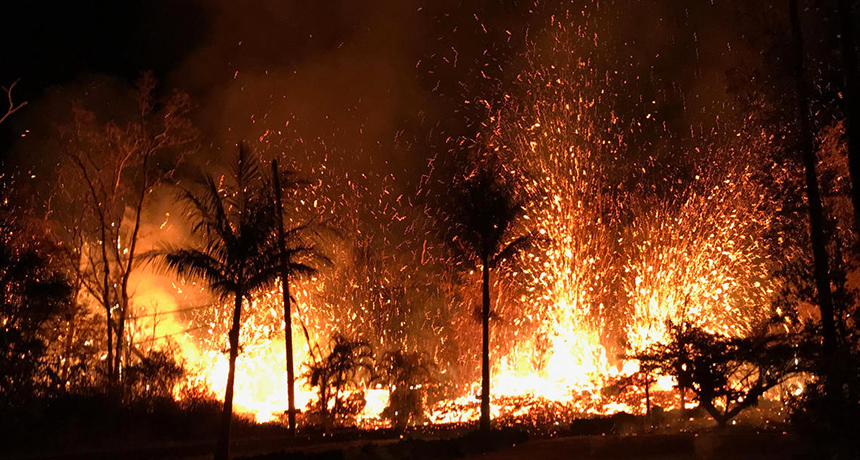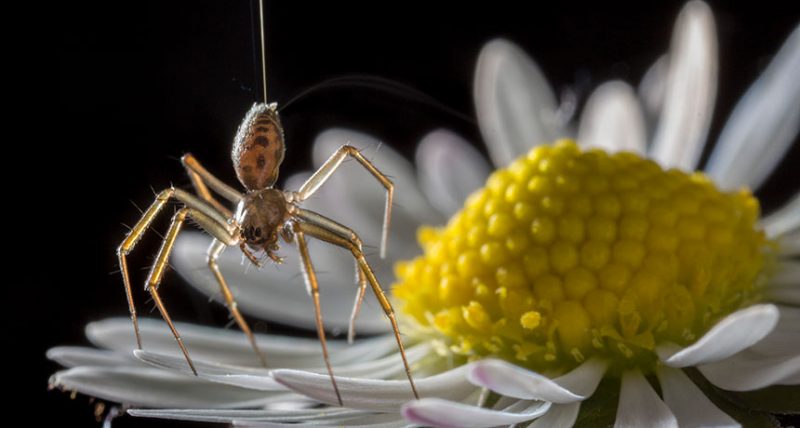antibiotic A germ-killing substance, usually prescribed as a medicine (or sometimes as a feed additive to promote the growth of livestock). It does not work against viruses.
array A broad and organized group of objects. Sometimes they are instruments placed in a systematic fashion to collect information in a coordinated way. Other times, an array can refer to things that are laid out or displayed in a way that can make a broad range of related things, such as colors, visible at once. The term can even apply to a range of options or choices.
ash (in geology) Small, lightweight fragments of rock and glass spewed by volcanic eruptions.
atmosphere The envelope of gases surrounding Earth or another planet.
bacteria (singular: bacterium) Single-celled organisms. These dwell nearly everywhere on Earth, from the bottom of the sea to inside other living organisms (such as plants and animals).
cancer Any of more than 100 different diseases, each characterized by the rapid, uncontrolled growth of abnormal cells. The development and growth of cancers, also known as malignancies, can lead to tumors, pain and death.
cetaceans The order of marine mammals that includes whales, dolphins and porpoises. The baleen whales (Mysticetes) filter their food from the water with big baleen plates. The remaining cetaceans (Odontocet) include some 70 species of toothed animals that include beluga whales, narwhals, killer whales (a type of dolphin) and porpoises.
chemical A substance formed from two or more atoms that unite (bond) in a fixed proportion and structure. For example, water is a chemical made when two hydrogen atoms bond to one oxygen atom. Its chemical formula is H2O.
cloud A plume of molecules or particles, such as water droplets, that move under the action of an outside force, such as wind, radiation or water currents. (in atmospheric science) A mass of airborne water droplets and ice crystals that travel as a plume, usually high in Earth’s atmosphere. Its movement is driven by winds.
corona The envelope of the sun (and other stars). The sun’s corona is normally visible only during a total solar eclipse, when it is seen as an irregularly shaped, pearly glow surrounding the darkened disk of the moon.
electric field A region around a charged particle or object within which a force would be exerted on other charged particles or objects.
environment The sum of all of the things that exist around some organism or the process and the condition those things create. Environment may refer to the weather and ecosystem in which some animal lives, or, perhaps, the temperature and humidity (or even the placement of components in some electronics system or product).
eruption (in geoscience) The sudden bursting or spraying of hot material from deep inside a planet or moon and out through its surface. Volcanic eruptions on Earth usually send hot lava, hot gases or ash into the air and across surrounding land. In colder parts of the solar system, eruptions often involve liquid water spraying out through cracks in an icy crust. This happens on Enceladus, a moon of Saturn that is covered in ice.
fog A thick cloud of water droplets that touches the ground.
Greenland The world’s largest island, Greenland sits between the Arctic Ocean and North Atlantic. Although it is technically part of North America (sitting just east of Northern Canada), Greenland has been linked more politically to Europe. In June 2009, Greenland became an independent nation. Ice covers roughly 80 percent of Greenland. Indeed, the Greenland ice sheet is the world’s largest. If its frozen water were to melt, it could raise sea levels around the world by 6 meters (about 20 feet).
lava Molten rock that comes up from the mantle, through Earth’s crust, and out of a volcano.
lavanado A term created by combining “lava” and “tornado.” It refers to a whirlwind of lava. It forms when intense heat from the volcano causes air to swiftly rise into a tall column, then strong winds force it to rotate.
liquid A material that flows freely but keeps a constant volume, like water or oil.
Mars The fourth planet from the sun, just one planet out from Earth. Like Earth, it has seasons and moisture. But its diameter is only about half as big as Earth’s.
microbe Short for microorganism. A living thing that is too small to see with the unaided eye, including bacteria, some fungi and many other organisms such as amoebas. Most consist of a single cell.
native Associated with a particular location; native plants and animals have been found in a particular location since recorded history began. These species also tend to have developed within a region, occurring there naturally (not because they were planted or moved there by people). Most are particularly well adapted to their environment.
phenomena Events or developments that are surprising or unusual.
planet A celestial object that orbits a star, is big enough for gravity to have squashed it into a roundish ball and has cleared other objects out of the way in its orbital neighborhood.
prey (n.) Animal species eaten by others. (v.) To attack and eat another species.
Red Planet A nickname for Mars.
reservoir A large store of something. Lakes are reservoirs that hold water. People who study infections refer to the environment in which germs can survive safely (such as the bodies of birds or pigs) as living reservoirs.
rocket Something propelled into the air or through space, sometimes as a weapon of war. A rocket usually is lofted by the release of exhaust gases as some fuel burns. (v.) Something that flings into space at high speed as if fueled by combustion.
salt A compound made by combining an acid with a base (in a reaction that also creates water). The ocean contains many different salts — collectively called “sea salt.” Common table salt is a made of sodium and chlorine.
secondhand smoke The gas and smoke particles emitted out of the burning end of a cigarette in addition to the particles exhaled by smokers. This pollution can be toxic and hand into the air (where it is available to be breathed in) for hours. Government scientists report that this secondhand smoke may contain up to 7,000 different chemicals, including hundreds that may be toxic (70 of which can cause cancer). According to the U.S. Centers for Disease Control and Prevention, since 1964, some 2.5 million nonsmokers have died from exposure to secondhand smoke.
silk A fine, strong, soft fiber spun by a range of animals, such as silkworms and many other caterpillars, weaver ants, caddis flies and spiders.
smoke Plumes of microscopic particles that float in the air. They can be comprised of anything very small. But the best known types are pollutants created by the incomplete burning of oil, wood and other carbon-based materials.
solar wind A flow of charged particles (including atomic nuclei) that have been ejected from the surface of the star, such as our sun. It can permeate the solar system. This is called a stellar wind, when from a star other than the sun.
spider A type of arthropod with four pairs of legs that usually spin threads of silk that they can use to create webs or other structures.
star The basic building block from which galaxies are made. Stars develop when gravity compacts clouds of gas. When they become dense enough to sustain nuclear-fusion reactions, stars will emit light and sometimes other forms of electromagnetic radiation. The sun is our closest star.
sun The star at the center of Earth’s solar system. It’s an average size star about 26,000 light-years from the center of the Milky Way galaxy. Also a term for any sunlike star.
Venus The second planet out from the sun, it has a rocky core, just as Earth does. Venus lost most of its water long ago. Volcanoes on the planet’s surface spewed high levels of carbon dioxide, which built up in the planet’s atmosphere. Today the air pressure at the planet’s surface is 100 times greater than on Earth, and the atmosphere now keeps the surface of Venus a brutal 460° Celsius (860° Fahrenheit).
vog Volcanic smog that forms when sulfur dioxide and other gases and particles seep out of a volcanic fissure, then react with oxygen, water vapor and sunlight.
volcano A place on Earth’s crust that opens, allowing magma and gases to spew out from underground reservoirs of molten material. The magma rises through a system of pipes or channels, sometimes spending time in chambers where it bubbles with gas and undergoes chemical transformations. This plumbing system can become more complex over time. This can result in a change, over time, to the chemical composition of the lava as well. The surface around a volcano’s opening can grow into a mound or cone shape as successive eruptions send more lava onto the surface, where it cools into hard rock.









